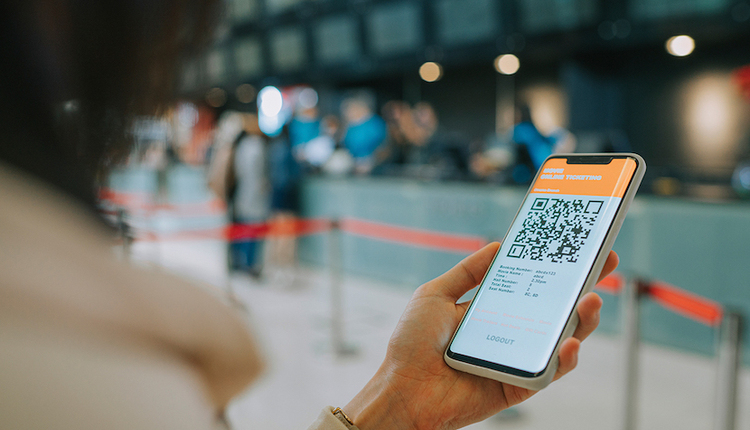
As an avid movie goer, I regularly visit my local cinema for the latest release, blockbusters, or smaller independent films. Recently it occurred to me that my ticket purchase behavior had narrowed to a single provider directly due to the whole end to end experience. This helped clarify for me the importance of experiences in addition to preferences when it comes to customer loyalty, and what that means for customer communication processes. Let me explain what I mean.
These days, most event tickets are bought online (web or app-based), and this was the case with all my movie going purchases. For the longest time I used both a third-party provider and my theatre’s own website or app interchangeably. Both had preferences figured out as part of the booking process, with choice of movie, number of tickets by type, and then seat selection before choice of payment method and ticket delivery method. But it was this last step of ticket delivery preference that changed my behavior and led me to favor just one of the providers. It was down to experience.
Both services offered the tickets delivered to your mobile phone, so the device screen can be scanned by the theatre staff on entry. But for one site, the third party, I was provided a ‘send to phone’ link via a button. When clicked it requested you enter your phone number, twice for accuracy, which then sent a text to your phone. The text itself was just a hyperlink back to the providing website to display the 2D movie ticket barcode on your phone. Now the theatres own booking system had a link too, but this one was an integration into my phones wallet service directly. With one click I had my tickets on my phone, no text and certainly no extra clicking and steps. This doesn’t sound like too much of a difference, but the phone wallet app automatically enlarges the barcode while simultaneously adjusting the screen brightness to assist the scanning. When walking into the darker area of the theatre to have the ticket validated, the ability to pull out my phone and with the click of an app have the barcode ready to go was a winner. It’s much more seamless than finding a text, clicking the link and perhaps enlarging the screen or adjusting brightness to allow the scanner better operability, all while a line of other customers wait behind me!
So that small difference feels like a much larger one. One where my experience is ultimately improved and consequently, I now far prefer direct booking with the theatre over the third-party site. My life is made simpler with one, and that feels better to me. The experience factor wins out.
What is the difference between customer preference and experience? So how does this relate to your customer communications and business?
Customer preference refers to the specific needs, wants and choices of your individual customers. It’s the set of factors that make your customer choose one product or service over another, such as price, quality, brand and features. Customer experience, on the other hand, refers to the overall perception and impression the customer has of your company and its products or services. It encompasses every interaction they have with your company, from the first time they learn about it to post-purchase follow-up, and includes elements such as convenience, responsiveness, reliability and emotional connection.
Customer preference and customer experience can sometimes be confused. They are certainly closely related and can and do impact each other. Your customer's experience with the company may influence their preferences, and vice versa. For example, they may have a positive experience with your company and as a result, develop a preference for your products or services over competitors. Essentially customer preference is about what customers want, while customer experience is about how they perceive the company and its offerings. Both are important for your company to understand and prioritize to meet the needs of customers and build long-lasting relationships.
For decades now, your communication processes have been very specifically customer-focused. Long gone are the days where the communication, be it a statement or general correspondence, was barely more than a standard mass replicated form. These days, we recognize a communication as one of the many direct touch points your company has with its individual customers, and the importance of making each opportunity feel like a personal connection.
This may be achieved by adding additional content in a statement that offers applicable upgrades or related products based on the customer’s history as an in-communication marketing-based personalization. More typically, the focus has been on giving your customer choices and allowing them to feel in control. For example, some customers may prefer to receive communication through email, while others may prefer text messages or phone calls. Another example of preference could be in their desired frequency or timing of the communication. Understanding preferences can help your company communicate more effectively with your customers and ensure they receive the information they need in a way that is convenient for them.
What is more important— customer preference or customer experience?
Using customer data to personalize a communication can be an example of both customer preference and customer experience. In terms of customer preference, the data collected about a customer can reveal their specific needs, such as the products or services they are interested in, their preferred method of communication, and the type of content they prefer to receive. By using this data, you can tailor your communication to the individual customer and deliver a personalized experience that meets their needs and preferences. Yet in terms of customer experience, using customer data to personalize your many communications can help to create a more seamless and enjoyable experience. When a customer receives a communication tailored to their individual needs and preferences, they are more likely to feel understood and valued, which can help to build trust and loyalty.
Overall, using customer data to personalize communication can improve both customer preference and customer experience. It allows all companies to deliver a more tailored and relevant experience that meets the needs and preferences of individual customers. However, it is important to distinguish between the two, as companies need to understand both to effectively meet the needs and expectations of their customers. A company may focus on providing a great customer experience, but if it does not align with the customer's preferences, the customer may not choose to do business with them. Similarly, a company that prioritizes providing products or services that meet customer preferences but offers a poor customer experience could result in a dissatisfied looking for alternatives.
Preference and experience: two sides of the same end goal coin when creating delighted, loyal customers.
Andy Feest, Sr. Manager, Product Management for Opentext, is a 30 plus year professional experienced in Product and Program Management and leading global product, customer support and development teams. With 27 years of experience in the CCM space including consulting and development for enterprise and service providers in the United Kingdom and the United States.













